Author: Lorenzo Sicilia, Head of Engineering at Outlier Ventures; Translation: Jinse Finance xiaozou
Outlier Ventures has noticed the healthy development of some decentralized social networks, and Farcaster and Lens Protocol have begun to gain real user attention. When it comes to products for the mass market, crypto technology is becoming more and more practical and efficient. The lack of private key management and mobile-first experience has always hindered people's crypto adoption.
In this article, we will take a deep look at several major encrypted decentralized social media competitors, their respective functions, architectures, and talk about the opportunities that Web3 founders are keen to build new permissionless social graph protocols.
1, Social Networks
After more than a decade of using Instagram, Facebook, Twitter and other platforms, everyone knows how social networks work. The concept of social networks is centered around users, who provide their preferences to the system by filling out their profiles and choosing the accounts they like to follow, and in return, they receive a customized stream of information generated in real time.
Social networks have built their empires around this simple concept, with the ultimate goal of capturing users’ attention and keeping them inside the walled garden of social networks for as long as possible. The value is embedded in the user’s data, which in turn becomes a commodity.
Decentralized social networks want to break down these barriers, enabling the portability of user identities, giving users more control over their preferences/privacy, and making it easier to switch between platforms.
Just as cryptocurrencies bring permissionless transactions to anyone, anywhere in the world, DeSo brings permissionless communication and uncensorable broadcasting capabilities.
However, what is really exciting is that DeSo is also permissionless for builders, allowing developers to build on existing protocols without having to ask any gatekeeper for permission to innovate. The successful paradigm of "DeFi Lego" can be repeated here.
Before the emergence of DeSo based on Web3, the only decentralized social attempt was Mastodon. After Elon Musk acquired Twitter, Mastodon seemed ready to take advantage of this, but in the end its usability issues and fragmented user experience caused its growth to stop at 1 million daily active users.
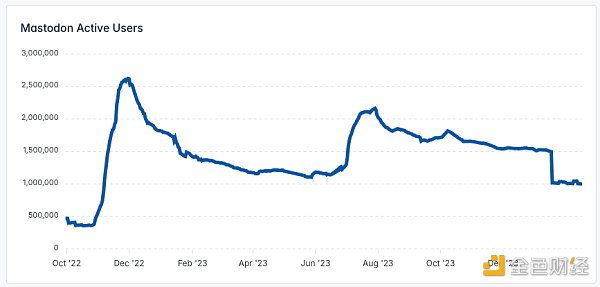 Today, Farcaster, Lens and other projects are trying a different approach based on Web3 primitives, bringing something new.
Today, Farcaster, Lens and other projects are trying a different approach based on Web3 primitives, bringing something new.
2、SocialFi
SocialFi adds Web3 primitives to decentralized finance on top of social graph networks. Participants include content creators, Internet celebrities, and end users who want to have better control over their data and freedom of speech, and be able to profit from social media attention and stickiness.
The monetization method is based on cryptocurrency, while identity management is handled by a set of private keys. Most of them say they can use decentralized autonomous organizations (DAOs) to resist censorship. But there is no conclusion yet.
Let's take a look at the main differences between it and other social networks:
Token-gated areas: Only the creator's token holders can access certain functions or areas.
Tipping: People can receive tips in the form of cryptocurrency, either in the platform token or other tokens.
One-time or recurring subscriptions: Crypto payments for digital goods or services are made within the platform.
Platform incentives: Users and creators can be incentivized in platform tokens based on their engagement.
While these concepts have been around for a long time, they did not gain significant market attention until Friend Tech discovered the potential of token-gated chats. Users need tokens called “keys” (which can be traded) that allow users to benefit from the growing popularity of content creators.
Friend Tech had 800,000 unique addresses at its peak, but retention has since dropped significantly.
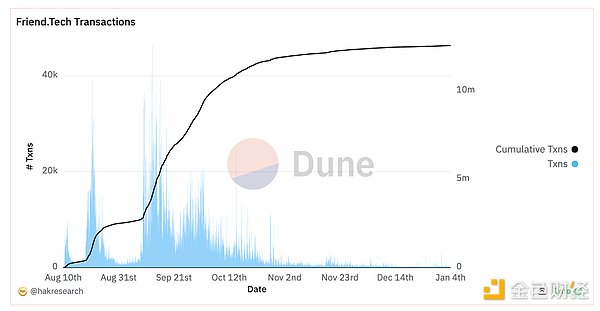
While bonding curves are good at driving adoption by creating a sense of urgency and FOMO, they fall short in terms of user retention in the long run. To truly maintain user stickiness, two key elements are required: a network effect that amplifies the value of the platform as more users join; and clear long-term utility that provides tangible benefits beyond short-term gains.
3, Web3 Social Graph
Social graphs represent relationships between entities, such as people, organizations, places, and anything else that can be connected to each other. Web2 entities like Facebook, Twitter, Instagram, and TikTok have accrued significant network effects, especially in deterring users from joining other social sites because switching networks means starting over.
Lens, Farcaster, and other projects are building differentiation from this friction point by developing true open graphs with multiple front ends that leverage the same data to provide different user experiences.
However, Facebook generates 4 petabytes of data every day. Every minute, 510,000 comments are posted, 293,000 status updates are posted, 4 million likes are received, and 136,000 photos are uploaded. No existing blockchain can handle this amount of data, and it may never be able to, because blockchains are optimized for a different type of use case: permissionless value exchange.
For example, double spending, a classic blockchain financial risk, is irrelevant in a decentralized social network that handles usernames, content distribution, and notifications. The Lens and Farcaster teams should consider different assumptions with various trade-offs.
4, Lens Protocol
The Lens protocol is a composable social graph created by Aave founder and CEO Stani Kulechov. The protocol is community-driven and is currently deployed on Polygon.
Lens is built around several key smart contracts that handle all aspects of social interaction.
· Profiles are represented by NFTs, the main objects in the protocol. If you own one of these NFTs, you control the social graph and content. -Profile contains a history of all Posts, Quotes, Mirrors, Comments, and all other content generated by the user.
·Publications represent the content of the protocol and there are four types: Posts, Comments, Quotes, and Mirrors. Posts is the base object, and the others are extensions of the base entity. Most importantly, each publication has a ContentURI. Basically, everything stays on-chain except for the content (such as images, text, etc.), which is associated with a decentralized storage solution such as IPFS or Arweave or even AWS S3.
·Mirrors, Comments, and Quotes allow users to interact with publications through comments, quotes, or content propagation. Therefore, all references to the original publication module follow the same rules (for example, only followers can quote/comment/mirror).
·Open Actions provide a way for developers to build custom functions that can be embedded directly into the protocol. You can think of them as hooks that are triggered by the protocol whenever something happens (for example, Alice can see that Bob gave her a tip, so she can have an indexer that tracks earnings).
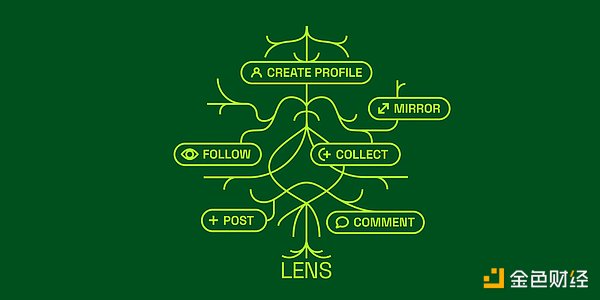
From the beginning, the Lens team focused on the protocol itself and let the community take charge of the front-end construction, so many different UIs were created, each with its own style. The result is a vibrant ecosystem, but also a bit of chaos, with many projects disappearing within a few days. However, we are gradually seeing the consolidation of projects such as buttrfly, hey.xyz, and orb gaining traction. After running Lens v1 for a while, Lens launched Momoka, an Optimistic L3 that goes beyond the blockchain space. Instead of storing data directly on Polygon, they leverage the Data Availability (DA) layer to reduce costs simply by uploading data to Arweave.
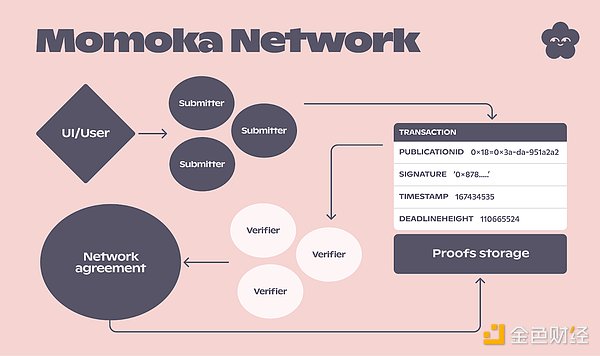
5、Farcaster
Farcaster is another Web3 social network built on Ethereum, which utilizes on-chain smart contracts and a peer-to-peer network matrix based on the "Hub" client.
Similar to Lens, Farcaster is open and has spawned many different clients based on it, the most popular of which is Warpcast, which is developed by the Farcaster team itself, as well as Supercast (with paid features) and Yup (focused on cross-posting).
In 2022, Varun Srinivasan published a blog post on "Sufficient Decentralization", which proposed some ideas that have been at the core of Farcaster's architecture and approach since then.
The main idea is that if "two users on a social network can find each other and communicate across other obstacles on the network", then the social network is sufficiently decentralized.
To do this, you need to:
>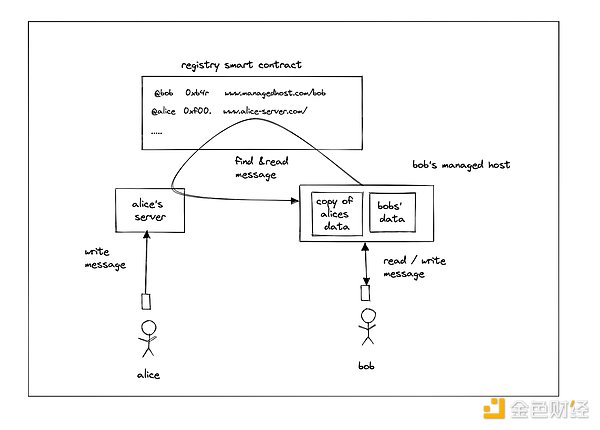
Farcaster implements its architecture through a set of core smart contracts deployed on Optimism:
Message-level verification is performed by verifying a valid signature from a user account key.
Once a message is verified to be valid, it is stored in the hub through an asynchronous process that utilizes the CRRDT (Conflict-Free Replicated Data Type) approach.
Replication is implemented using a diff sync and gossip protocol based on the popular libp2p codebase. The Hub periodically selects a random node to perform a diff sync, comparing Merkle tries of message hashes to find missed messages.
The Hub has a strong eventual consistency architecture because the state can be reconstructed using their peers even if they go offline.
Peers are critical to maintaining the state of the protocol, so they evaluate each other. If a node does not receive valid information, falls behind, or gossips too much, it may be ignored.
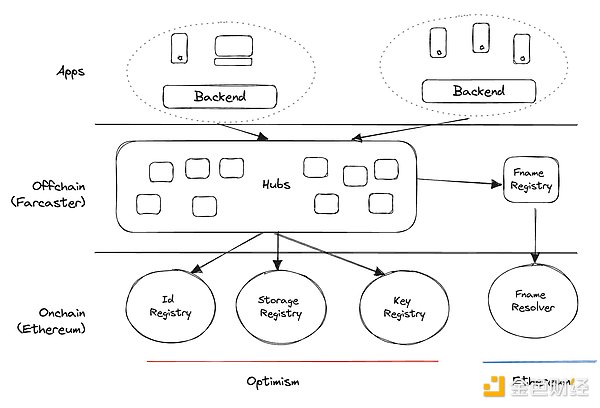
6、No permission required
From these protocols and principles, we see new primitives emerge. Among them, Farcaster's Frame has received considerable attention.
Frame makes it possible to inject custom experiences into Farcaster's information flow. It extends the Open Graph standard and turns static images into interactive experiences by adding up to 4 buttons. When the user presses a button, they get a new image based on the button click and the user metadata sent to the Frame generation server.
Based on this, we are starting to see a lot of experiments like creating pools, digital collectibles, and mini-games deployed through these Frames.
Creating Frames is possible using any application server that can return html content, but we have seen a lot of Frames like https://framesjs.org/, https://frog.fm/, and others that help developers simplify the process.
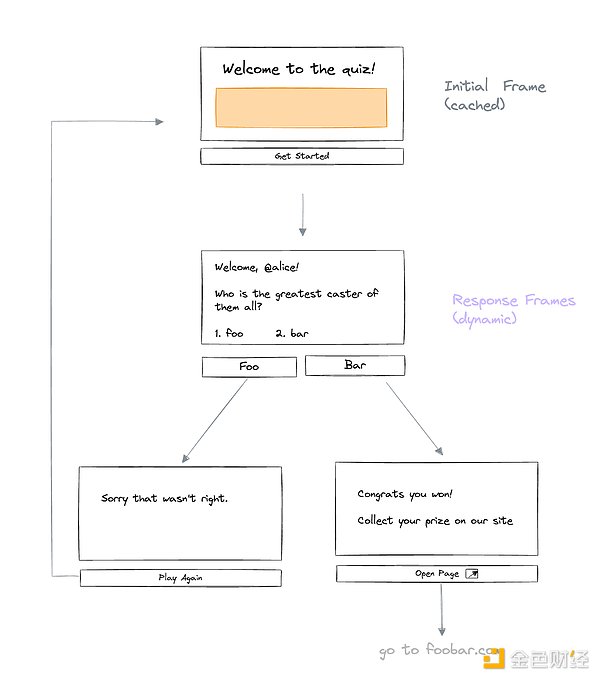
After the successful launch of Frames on Farcaster, Lens is now also under consideration, which shows that having common standards can be a powerful driving force.
7, Conclusion
Decentralized social networks still face huge challenges before they can be completely successful, including expanding their infrastructure to accommodate more users, simplifying the process for new users to create digital wallets, and abstracting gas fees as much as possible.
Despite these challenges, we are seeing substantial progress in the overall user experience of Farcaster and a sticky community forming around Farcaster (e.g. ~50k daily active users, ~350k registered users). A big factor contributing to these numbers is the availability of mobile apps that are easy to install and provide a user experience similar to traditional social networks.
Another key factor is the permissionless nature of the protocols (e.g. Farcaster, Lens, etc.), which provides fertile ground for developers to innovate and build on top of existing blocks and features.
Just like the summer of DeFi, we are witnessing a dynamic environment of experiments (e.g. yup.io, a decentralized social network aggregator, drakula.app, a short video platform, or neynar.com, a SaaS tool built on Farcaster) emerging from these protocols.
Founders can now start building a native Web3 distribution channel for their projects through which people can start their journey, expanding from their initial point of interest to other apps embedded directly in their feeds (e.g., via Frames) or other linked apps. At the same time, the app that attracts new users can serve as a distribution channel back to the rest of the decentralized social network, thus starting a positive feedback loop.
 JinseFinance
JinseFinance

 Today, Farcaster, Lens and other projects are trying a different approach based on Web3 primitives, bringing something new.
Today, Farcaster, Lens and other projects are trying a different approach based on Web3 primitives, bringing something new. 









